Redness, peeling of skin on the legs, appearance of cracks between fingers, ulcers on the feet, changes in nail condition: loss of gloss, usually pink shades, thickening of the plates – these and other signs of the development of fungal infection. Every inhabitant of the earth suffers from the end. So you need to know how the fungi look and behave on the legs, what it looks like and how to treat this unpleasant disease.
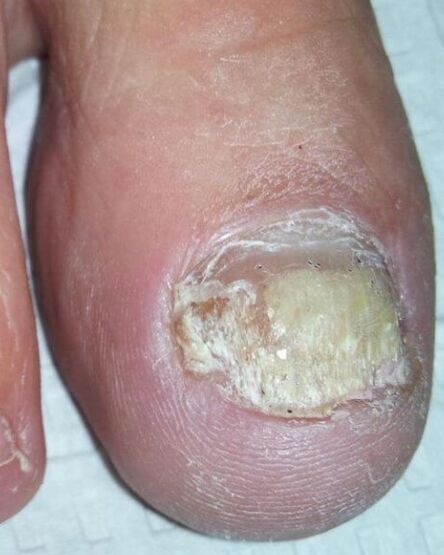
reason
In most cases, mycotic infections range from one person to one person directly or around objects. The advantageous conditions for reproduction of fungi are fever and humidity. After poor quality of manicure tools, disputes can also maintain viability in dry state.
The main causes of the disease include:
- Lack of regular foot care.
- Accommodation with people suffering from fungi.
- Use someone else's shoes and socks.
- Stop being injured.
- Visit the "Mushroom" public areas (beach, bathroom, swimming pool).
- Inadequate handling of pedicure accessories.
- Wear tight shoes with synthetic materials.
- Professionally harmful (working under high temperature and humidity conditions).
- Open shoes in the store, no socks or take off.
Fungal diseases in humans develop faster in the context of functional characteristics, as well as lead to immune suppression, changes in damage to local circulatory systems, and changes in skin conditions. The reasons for the body are as follows:
- Endocrine pathology (diabetes, obesity);
- Pregnant;
- Immune defect status;
- Increase sweating;
- Foot disease;
- Vascular disease;
- Chronic skin diseases (eczema, psoriasis);
- Long-term intake of drugs that inhibit immunity (corticosteroids, cell inhibitors).
Types of pathogenic mushrooms
Mushrooms on the human body feed on protein - keratin, elastin, collagen, split with enzymes: cutinase. The localization of mycotic diseases depends on the activity of keratinase and the ability to digest different types of keratin.
Mycoses on the legs can cause the following types of fungi:
- Trichomonas rubrum - a fungus that resides in the character layer - granuloma type. Causing lichens to cut, damage to the epidermis, nails in 80% of cases.
- Gretchophyters can cause the septal stop.
- Trichophyton Interdigitale. On the legs, fungi can cause skin botanical effects, tumor diseases.
- Candida mushrooms affect the skin and nail plates, and severely reduce immunity can affect the skin and nail plates, and severely reduce immunity.
Fungal skin lesions
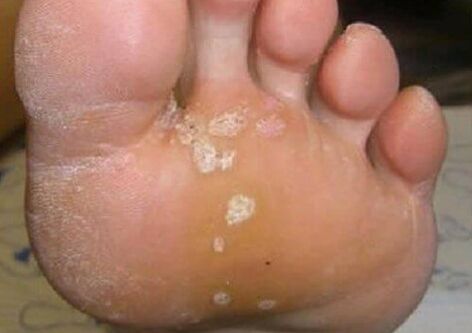
From mycotic diseases on the legs, lesions in the skin during psoriasis (sometimes called dry fungi) - red patches, peeling, tend to merge above the surface. Such elements are often found on the knees and legs. The disease has nothing to do with fungal infection.
The manifestations of foot fungi are conditionally divided into four main forms. Convention is the combination of clinical signs and the possibility of transition from one clinical to another.
In inter-form, the skin suffers in the digital space. The fungi of the leg skin manifests itself in the form of itchy, burning, accompanied by an unpleasant odor. Typically, infection affects the spacing between the 3 to 4, 4 and 5 fingers of the foot. The skin turns red, sores, and crying areas appear between the fingers. These signs are developed independently or with the background of existing scaly forms.
notes! For typical trans lesions, the attachment of secondary bacterial infections can aggravate the disease. Bacterial mucous eczema can form as the rash on the feet form, and inflammatory elements appear on the ankles, which decrease.
The advanced scaly hair form looks like common giant corn with cracks on it. Initially, the mycotic disease of the leg skin can attract attention through drying, peeling the foot skin, and limited heels. People see this symptom as a personal characteristic and do not turn to dermatologists. Skin lesions may be accompanied by itching and burning. If you look at photos of fungi on your legs in this form of bacteriosis, you may find deep cracks on the background of thickening of the skin of your feet (again shod shod in mocha). This manifestation is painful. The scaly forms are characterized by the destruction of the nail plates and their lag behind the nail bed.
The dyshidrotic (vesicle) shape of foot fungi is rarely manifested. The main symptom of the disease is the formation of air bubbles with thick shells and transparent content. They are located on the only side of the foot, with a single or drainage formation in the fingers. Then, bubbles are formed by erosion, with a purulent crust around the edges. Complications of vesicle lesions include:
- Toxic allergic reactions. They develop for 4-6 days and are usually symmetrical: feet, lower legs, forearms, face, and mucosa.
- The link between secondary bacterial or viral infection and eczema development.
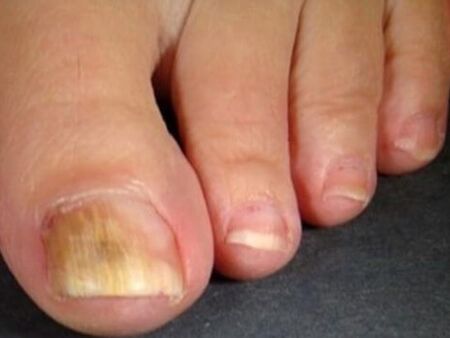
The erasing shape of fungi on the feet is characterized by the smallest lesion, so it is not easy to identify it. Main signs: the appearance of the intestinal peeling, the formation of microcracks between the fingers, discomfort, burning. Involve long distance nails.
Nail fungus
Due to no attention to the problem and proper treatment, the skin fungus on the fingers and feet appeared.
The first symptoms and signs of myomycosis may also not attract people's attention. You should contact your nail fungus on your legs and contact your dermatologist by:
- Change the color of the nail plate;
- The appearance of yellow or gray spots;
- Losing light;
- Appears on irregular surfaces;
- bars in nail structure;
- Increased brittleness.
There are many categories of dinoflagellate diseases. According to the appearance of the nail plate, they are divided into:
- Normal nutrition. Fungal infection turns the nail color to a pale yellowish gray, with the thickness and shape remaining unchanged.
- Thick. The characteristic of this fungus is that it changes greatly: the nails turn yellow and thicken. If you look at photos depicting this type of dinoflageasis, you may notice the characteristics of the plate to zip shape. The horizontal study can be seen, loose and brittle. This change in nails leads to their growth. Walking becomes painful.
- Onycholthic. The nail plates become thinner, change color and peel off from the nail bed.
According to the positioning and damage to the nail plate, the following types of Onychomycisos are distinguished: distal; side; mixed, proximal; all; surface.
Candida failure
In addition, damage to Candida mushrooms should be considered. These conditional pathogenic mushrooms can cause deep (affecting the viscera) and surface mycoses (dermal disease, tumor disease). Under normal conditions, human immunity inhibits the reproduction of this fungus and does not cause a large number of infections. Therefore, the activity of Candida shows serious illness in the body that protects the body and requires thorough examination to determine the cause of the immune deficiency. The first sign of infection is difficult to distinguish from injury, frostbite.
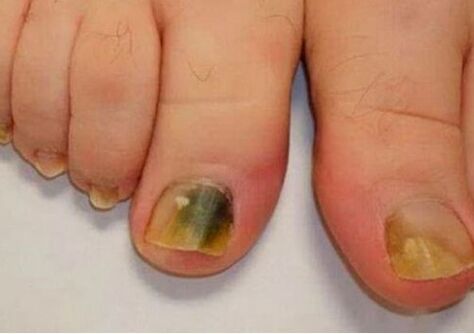
The fungal damage to the legs is as follows:
- On the fingers of the legs, the nail roller is inflamed, red, swollen, cracks in the skin, any discomfort in any movement. Under the nail plate, white shades of purulent separation are formed.
- The skin subsides, and the disease becomes chronic. The skin around the nails thickens and stops growing. Infection can affect the nail plate.
- The nails on the legs began to thicken, sprinkle them. Their color turns brown, brown. Violation of blood supply can lead to rejection.
diagnosis
Diagnosis of fungi on the legs includes:
- Conversation with patients (complaints, accompanying disease, working conditions, clarifying the possibility of infection).
- examine.
- Laboratory research method (scraping the skin, microscopic nails, sowing specialized crops, determination of sensitivity to drugs, ig g to aspergille, candidate).
treat
Fungi on the legs need immediate treatment prescribed by a dermatologist (or mycologist). You can perform tasks on an outpatient basis.
How and how to deal with fungi on your legs depends on many conditions:
- Positioning of pathological processes;
- degree, severity of failure;
- with the existence of disease;
- Patient age;
- In the case of women's treatment - pregnancy, breastfeeding facts.
Treatment of leg fungi takes a lot of time, and its main goal is to disappear signs of clinical and laboratory infection. Incomplete treatment leads to the recurrence of the disease.
Drug Therapy
Drug treatment with antifungal drugs that not only destroy mycotic diseases, it also helps eliminate manifestations of inflammation and eliminate secondary infections.
They are divided into:
- Local. Applied to lesions (oints, gels, creams, sprays, varnishes, solutions).
- Systemic - Oral (tablets, capsules, solutions).
In the initial stages of fungal infections, drug therapy is limited to the appointment of local funds. With common obsessive diseases, severe processes are required and systemic antibacterial hyphae connection is required.
The treatment of folk therapy.
There are many suggestions on how to get rid of fungi on the legs of folk and home remedies. Most mean external uses, some are inward. However, you should not drink alcohol on your feet and apply suspicious works on your feet in the hope of bringing neglected mycotics. This folk approach can harm health.
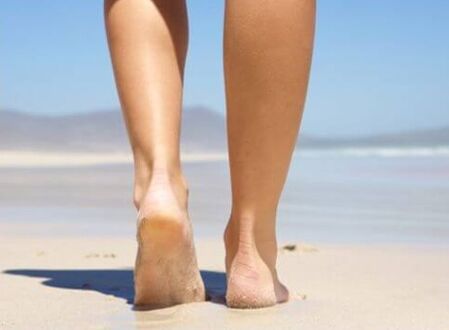
notes! The most common and most effective home remedies for fungi are legs with salt, soda, and essential oils. These treatment procedures are for preparing feet and nails for use of drugs.
Surgical treatment
With huge fungal damage, the nail plate must be removed. This method is safe, and there are actually no contraindications. An alternative to surgical procedures - use paste and ointment to soften the nails and then remove them.
Laser therapy
The use of lasers to combat Onychomycisois is based on heating and destroying fungal spores with directional beams. This technology allows you to cure muscular atrophy quickly, safe and suitable for patients contraindicated in systemic therapy.
Treatment of skin diseases
To begin the treatment of fungi, topical antifungal agents were used on the legs. If this condition does not improve after 2 weeks of treatment, an antibacterial agent is required. If severe damage is suffered, skin fungi require a prescription of systemic medication. Treatment continues until the infection is completely eliminated.
Treatment of tumor diseases
To eliminate the initial manifestations of nail fungi, local medicines were prescribed. Mycelial lesions in mycelial disease exceed more than 2/3 of the nail area, involve growth zones, and are distributed on other plates, which is an indication of taking systemic medications. Treatment begins by surgical removal of tissue from nails by surgical removal, thyroid disease and massive destruction of nail plates. This method allows access to infection focus.
Important!
Treatment for tumor diseases is performed before healthy nail growth and can last for 12 months.
The appearance of fungi on the legs can be caused by a variety of reasons. A careful attitude towards health will help identify the disease in a timely manner and start treatment.




























